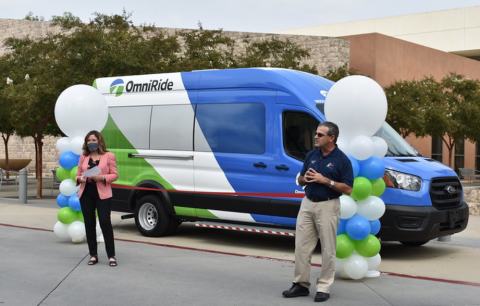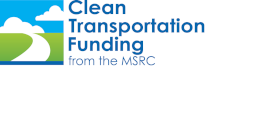
Recently appointed to the MSRC, Montclair Mayor John Dutrey has a long history with the agency dating back to the mid-1990s. John joined the MSRC this spring as the Regional Rideshare member, representing the San Bernardino County Transportation Authority (SBCTA).
John’s interest in clean air started at a young age. “I grew up in San Bernardino County, and I remember as a child going outside to play and the smog was so thick it got in your lungs,” he said. He recalls the days of so much smog that you couldn’t see the mountains, “and I wanted people to be able to see the mountains too.”
He went to Montclair High School and earned a Bachelor of Arts degree in Political Science and a Master of Arts degree in Public Administration from Cal State San Bernardino. He started his civil service career as a planning intern with the City of Upland and became a public works project coordinator. In 2000, he worked for the City of Rialto’s redevelopment agency on affordable housing projects. He dipped his toe into the political arena in 1990, joining the Montclair Planning Commission. John was first elected to the Montclair City Council in 1996, and was elected Mayor in 2018.
John has witnessed first-hand the changes to his community over the years. “As San Bernardino County has developed further and the LA Basin has grown, there is more traffic, especially truck traffic, so we are seeing more vehicle emissions that create a health risk to the public. We have a lot of warehouses here now and a lot of trucks on our local freeways, and so all of those have negative consequences for the public’s health, especially in our disadvantaged communities.”
However, John knows that this growth is vital to the area. “Goods movement is important in the county in terms of the economy and jobs, and the distribution centers contribute to the economic boom locally.” He looks to the growth in cleaner vehicles to help balance things out. “There is a great deal of technology in terms of cleaner engines and electric vehicles compared to where we were 20 years ago – I can only imagine where will be when we hit 2030 and 2040.”

In the mid-1990s, he was the assistant for South Coast Air Quality Management District Governing Board Member and Montclair Councilmember Leonard Paulitz, who also served on the MSRC. John said he sat in on his share of MSRC and TAC meetings in those days. “I can remember when GM’s EV1 was introduced, and the MSRC was funding charging stations back then. At that time, the MSRC was probably one of the primary air quality funding organizations in the South Coast Basin, and so it was playing a major role 20 years ago. It’s long been a significant organization to fund new technologies to reduce emissions.”
John understands that transportation and mobility issues are very important for the average resident. “Our roads have become much more crowded and then you have the air quality issues as well, so it’s challenging to figure out how to move people around without using a personal vehicle.” Public transportation is one way to address this, but he also cites innovative ideas like autonomous vehicles and high-density Transit Oriented Districts, as well as incorporating EVs, bicycles and walking to help people get off the roads.
John is helping to implement these ideas in his own city. At the transit station in North Montclair, the City recently completed three new 200-unit developments with the plan that the Gold Line will eventually extend to the City of Montclair and that Metrolink will enhance its service to the station. This area also features a shopping district and the hope is that people will get out of their cars and walk and bike around instead. It is also close to the Claremont Colleges, so the City hopes to encourage students and faculty to use alternative forms of transportation to get to campus.
In addition to his role on SBCTA, John’s commitment to cleaner transportation is demonstrated by his service on several other regional boards, including Omnitrans, Metrolink (as an alternate member), and the Foothill Gold Line Joint Powers Authority Board.
John believes the biggest contribution the MSRC can make is to continue to advance technology, especially with trucks and reducing engine emissions. “The MSRC is important because it provides seed funding for demonstration projects to launch new technology, and can be combined with other sources of funds to launch even bigger projects. The MSRC can fund projects that might be considered high-risk that other people may be reluctant to put funding into, but that are needed to advance clean air technologies. We’re willing to take the risk for these important projects.”
He enjoys being back with the MSRC, although he laughs and says he wishes it could be in person. He’s happy he gets to represent SBCTA on the Committee and to have a positive impact on reducing emissions from mobile sources.
